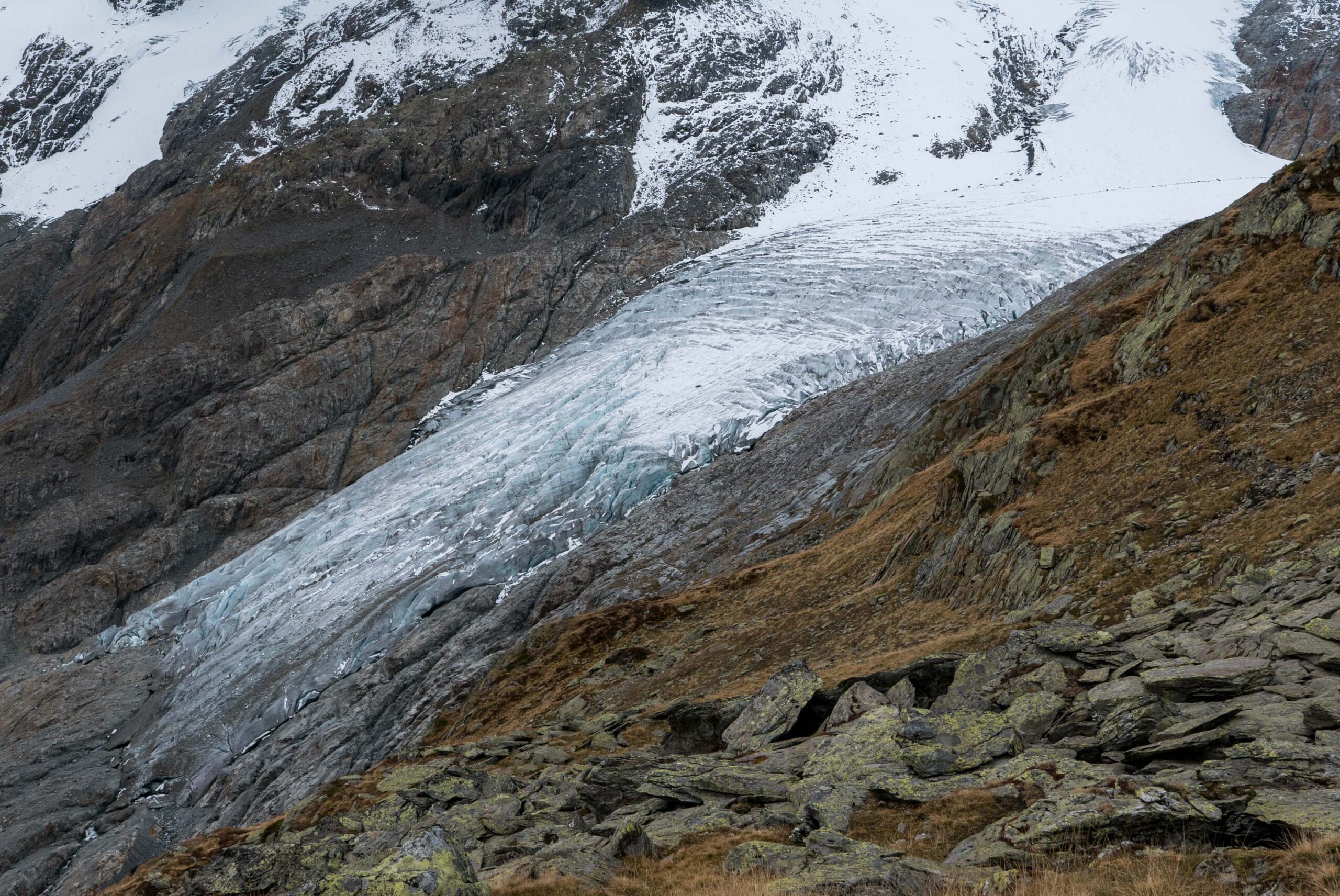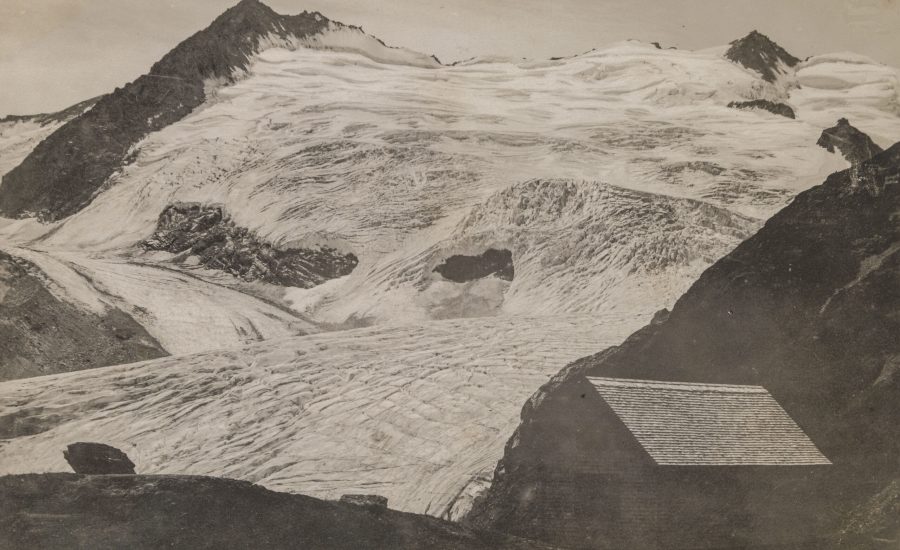Gauligletscher is a 6 km long glacier in the Bernese Alps. This remote glacier suddenly became the center of attention in 1946, when an airplane crash-landed on its surface.


Snout of Gauligletscher in 2000 (left) and 2021. Sourse: swisstopo zeitreise.
In November 1946 a US Dakota airplane crash-landed into the upper parts of Gauligletscher at 3300 m. The pilot was disoriented due to bad weather, but luckily the crash site was quite flat and had deep snow, so nobody was seriously injured.

The crew mistakenly thought they were somewhere in France and was located three days later. Food was dropped in a first attempt to help them, but ended up in crevasses. One dropping even damaged one of the wings, after which the crew wrote ‘FINI’ (stop) in the snow. They were afraid that the next dropping would damage the plane, in which they found shelter. Five days after the crash everybody was evacuated by two planes equipped for landing on glaciers.

Because the plane was high up the glacier, snow accumulated on top of it and the airplane got buried under snow. In the course of 80 years the glacier transported the parts downhill. In 2012, at 3,5 km from the crash site, a propellor emerged from the ice. Six years later a second one was found, together with an engine and wing parts (Compagno et al., 2019).
It’s a bit odd that some pieces of the plane were already found in 2012-2018, whereas the fuselage is still to be uncovered. A group of Swiss scientists calculated that these pieces must have been brought down-glacier 1.5 km, to the evacuation location in 1946 in an (failed) attempt to retrieve valuable pieces like the engines (Compagno et al., 2019). The scientists modelled the trajectory of the plane with the help of elevation models, velocity information and mass balance measurements. This way, they wanted to calculate where the body of the plane will emerge, as it is still somewhere embedded in the glacier. They expect the body to appear between 2027 and 2035.



A second study had a different approach. It dates the surface ice of Gauligletscher with the help of radionuclides. Contaminations of plutonium and uranium were released into the atmosphere in the 1950’s and 1960’s as a result of nuclear weapon testing and fell down all over the earth, including Gauligletscher. Where the glacier’s surface contains most of them, the ice must have been formed in the 1950’s and 1960’s. From this extra information it was concluded that flow velocities of Gauligletscher are higher than previously thought. The pieces that were found in 2012-2018 would not have been relocated, but in fact transported 3,5 km from the crash site. The body of the plane should be very near and melt out within a few years (Jouvet et al., 2020).
While the first study calculated a maximum depth of the plane of 68 meters in the year 2000, the second study calculated a depth of 120 m in the late 1980’s. Either way, the metal that’s going to appear will hardly resemble an aircraft, after being buried in the crushing ice for nearly a century. Its exact location will in turn tell glaciologist more about the behavior of glaciers in general and Gauligletscher in particular.

The search for the lost airplane has sparked glaciological studies of Gauligletscher. New methods and models were tested and help us better understand glaciers. Meanwhile, the glacier lost ice at accelerating rates. While ice loss was limited to about 10 m annually in the period 1958-2005, Gauligletscher lost 1 km in the next twenty years. This has everything to do with the uncovering of the glacial lake Gaulisee. It wasn’t visible until the 1990’s, but the ice did get thinner. In the subsequent years the glacier disintegrated in the lake and thus receded rapidly. For a few years beautiful icebergs occupied the lake, but the glacier pulled from the lake in 2012.
Orthophotos of Gaulisee in 1947, 1969. 1986, 2000, 2010 en 2021. Sourse: Swissimage zeitreise.

Because the glacier is retreating so much, it’s getting harder and harder to get a glimpse of it. In the old days the glacier could already be spotted from Mattenalpsee at 1900 m. The hut Gaulihütte (2204 m) was right above the ice. Now, you don’t even see the glacier from the hut. Instead, you have to walk all the way to a viewpoint at 2600 m to encounter Gauligletscher. There, one of the recovered propellers of the Dakota tells the glacier’s history.

What happened to the Dakota in 1946 can’t happen in present-day climate conditions. Would the plane crash today, it would never be buried, as no snow accumulates anymore. And if the plane was to be crashed on the exact same spot in fifty years, it would crash fatally into solid rocks instead.
Search within glacierchange: